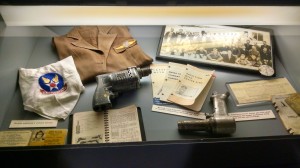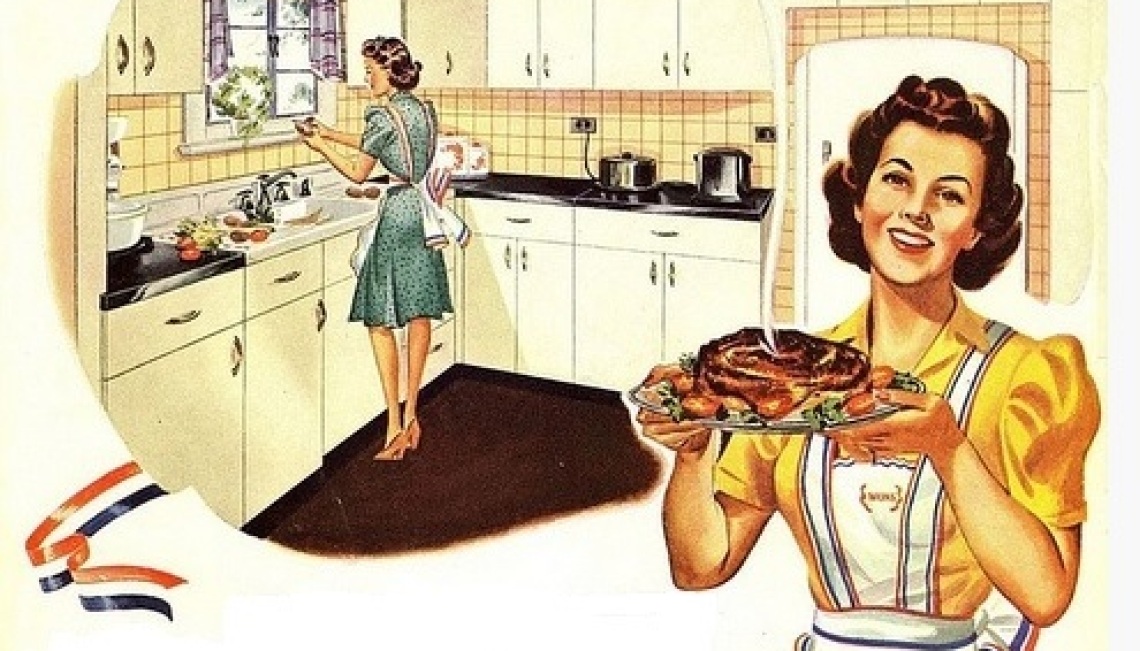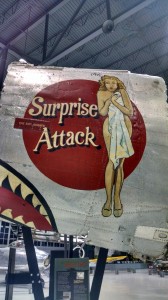A Memorial Display
Recently I was lucky enough to visit a traveling museum exhibit at the Experimental Aircraft Association (EAA) AirVenture Museum in Oshkosh, Wisconsin featuring WWII Nose Art from bombers and fighter craft of the war.
Nose art is a decorative painting on the fuselage of an aircraft, most popular during WIII. The display was salvaged from demolition and is now safely in the hands of the Commemorative Air Force (CAF) headquarters in Dallas who have secured designation of the artifacts by the National Trust for Historical Preservation as an official project of Save America’s Treasures.
There were practical reasons for nose art. It was important in identifying friendly units. Secondary, the art became a way to express individuality often constrained by the uniformity of the military. And bomber crews, which suffered high casualty rates, often developed strong bonds with the planes they were flying, affectionately decorated them with nose art and believed that the nose art was bringing luck to the planes. And as some of the stories told, frequently the art was a depiction of a sweetheart back home or of a pinup celebrity, or inspired by a popular song of the time. It evoked memories of home and peacetime life.
Nose art was not officially approved by the military. Regulations were not heavily enforced, especially on the Air Force side, but it has been shown that the farther the planes and crew were from headquarters or from the public eye, the racier the art tended to be. For instance, nudity was more common in nose art on aircraft in the Pacific than on aircraft in Europe. (Cohan, Phil. “Risque Business.” Air and Space, 5 (Apr.-May 1990), p.65)
Story boards at each display help the viewer put the art, plane and crew in historical context. Big band music played over the speakers helps to bring the mind along with the eyes to the glory days of the planes.
And kudos to the EAA AirMuseum for including in their display a section of artifacts and memorial to those on the Homefront. The tie-in between the art and the lives affected back home brought completion to the display. Beautifully done, we even get to know a little more about some of the riveters that made the planes.
 For more information about the museum and display, please click here.
For more information about the museum and display, please click here.



